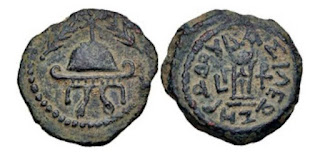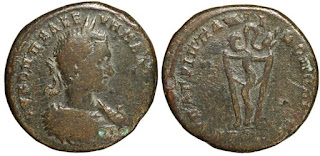Kutch or Cutch is a district of Gujarat state in western India, with an area larger than the entire area of states like Haryana and Kerala. It is the largest district of India. Kutch literally means something which intermittently becomes wet and dry, with a large part called as ''Rann of Kutch'' which is shallow wetland, that submerges in water during the rainy season and becomes dry during other seasons.
Kutch coin, Kori, 1923 AD,
Location of Kutch in Gujarat, India
The history of Kutch can be traced back to prehistoric times. There are several sites related to the Indus Valley Civilization in the region. The region is mentioned in Hindu mythology and in Greek writings. This area has been ruled by Menander I, of the Greco-Bactrian Kingdom, the Indo-Scythians, the Maurya Empire and the Sakas. In the 1st century AD, it was under the Western Satraps and then by the Gupta Empire. By 5th century, the Maitraka dynasty of Valabhi took over. By 10th century the Chaulukya dynasty were the rulers, followed by the Vaghelas. By 13th century, the Vaghelas ruled the whole of Kutch and adopted a new dynastic identity, the Jadeja. For 3 centuries, Kutch was ruled by three different branches of the Jadeja brothers. In the 16th century, Kutch was unified under one rule by Rao Khengarji I and his descendants.
Dholavira, one of the largest cities of the Indus Valley Civilization, with stepwell steps to reach the water level in artificially constructed reservoirs. Ten Indus characters from the northern gate of Dholavira, dubbed the Dholavira signboard.
North gate of Dholavira
It was known as the Kingdom of Kutch from 1147 to 1819 AD and a Princely State from 1819 to 1947.
Coat of Arms
Coat of Arms
Cutch State, map of 1878 AD.
Sindh and Kutch map, 1827
During the British rule, the state was part of the ''Cutch Agency'' and later the ''Western India States Agency'' within the Bombay Presidency.
Map of Cutch Agency area 1819-1924
Map of the area of the Western India States Agency and the Baroda and Gujarat States Agency during the British Raj
The Kingdom of Kutch was founded by Lakho Jadani of Samma tribe that had arrived from Sindh in 1147 AD. Lakhiaviro remained the capital from 1147 AD to 1548 AD. Kutch was ruled by the Jadeja Rajput dynasty of the Samma tribe from 1147 until 1948, when it joined India. The rulers were entitled to a 17-gun salute by the British authorities. The title of the rulers was earlier Ja'ám, changed to Maharao, and made hereditary from Jan 1918.
Family Tree of Jadeja Dynasty of the Kutch State (1880) Gazetteer of the Bombay Presidency Cutch.
The various Kutch communities were known for their trades with Muscat, Mombasa, Mzizima, Zanzibar and others, and also for their shipbuilding skills. Kandla was developed by Khengarji III in 1930 as a new port. Cutch State Railway was also laid during his reign, during 1900-1908.
Maharao Khengarji III of Cutch, 1900 AD
Kandla Port
Kutch was one of the first princely states to accede to India on 15 August 1947. Upon merger into India, the princely state was made a separate centrally administered Class-C state by the name Kutch State in 1948.
Coins of Kutch. The first series of coins were introduced in 1586 AD, and consisted of copper trambiyyo and dhinglo coins, and silver 1/2 and 1 kori coins. The 1 dokdo coin was introduced in 1632 AD, followed by the 1/2 trambiyo and 1/4 kori coins in 1645 AD, the 25 kori in 1875, and 1 dhabu, 1 payalo, 1 adhino and 10 kori coins in 1943. Kutch currency was replaced by the Indian rupee in 1947 at the rate of 1 Rupee= 3 1/2 Kori
Kori, Bhojrajji, 1632-1645 AD, weight 4.6 g
Obverse: legend in Urdu, As-sultan, Muzaffar Shah with frozen date, AH 978, Rao's name, Rao Shree Bhojrajji, in Devanagari at the bottom
Reverse: legend in Urdu, Ar-reman betaid al muwid shams ad duniya waud-din abu-Al nasir, dagger mint mark at the right bottom
Kori, 1666-1698 AD, Rayadhanji I, silver, weight 0.8 g
Obverse: legend in Urdu ''As sultan, Muzaffar Shah'' with frozen date AH 978, name Rao Shree Rayadhanji in Devanagari at the bottom
Reverse: legend in Urdu, Ar reman betaid al muwid shams ad duniya waud din abu Al nasir, dagger mint at the right bottom
Kori, Lakhpatiji, 1752 AD, silver, weight 4.6 g
Obverse: Trident, debased legend in Urdu ''Shah Sultan Ahmed'' AH 1165 in the center, Ruler's name Maharao Sri Lakhpatiji in Devanagari at the bottom
Reverse: Persian legend, dagger mint mark at the bottom right side
Kori, Bharmalji II, 1752 AD, frozen date AH 1165, silver, weight 4.7 g
Obverse: Persian legend with a dagger at bottom right
Reverse: Trident with debased legend in Urdu ''Shah Sultan Ahmed'' Rao's name Rao Shree Bharmalji at bottom in Devanagari, dagger mint mark at bottom
Kori, Deshalji II, 1830 AD, silver, weight 4.5 g
Obverse: Trident, legend in Urdu ''Badshah ghazi Muhammad Akbar II sikka'' Rao's name Rao Shree Desalji in Devanagari at the bottom
Reverse: legend in Persian ''Zarb Bhuj Sanah, date below, struck in Bhuj, dagger pointing left at bottom left
Kori, Deshalji II, 1852 AD, silver, weight 4.6 g, citing Mughal Emperor ''Bahadur Shah II'', mint Bhuj AH (12) 34 frozen date.
Dokodo (1/24 Kori), 1873 AD, copper, weight 6.1 g
Obverse: ''Malika Muázzamah Queen Victoria'' written around anti-clockwise, dagger mint mark in center circle
Reverse: VS date below trident (Trishul) in center circle (Maharao Shree Pragmal ji) written around in Devanagari, clockwise
1 1/2 Dokdo (Dhinglo or 1/16 Kori), 1783 AD, copper, weight 9.8 g
Obverse: ''Malika Muázzamah Queen Victoria'' written around anticlockwise, dagger mint mark in center
Reverse: VS date below trident (trishul) in center circle (Maharao Shree Pragmal ji) written around in Devanagari, clockwise
3 Dokda (Dhabu or 1/8 Kori), Pragmalji II, 1868 AD, copper, weight 19.7 g, mint Bhuj, VS 1925, Reverse: Sa(m) vat and date at the top, ruler Pragmalji II
2 1/2 Kori, 1875 AD, Pragmalji II, silver, weight 6.8 g
Obverse: ''Malika Muázzamah, Queen Victoria Zarb Bhujnagar, Kori do-wa-nasf, AH date 1875, inner circle and leaves of wreath around the legend
Reverse: Trident, closed crescent and dagger within inner circle, legend within inner circle in Devanagari, ''Maharaja Dhiraj Mirza Maharau Shri Pragmalji Bahadur
5 Kori, 1866 AD, Pragmalji II, silver, weight 13.8 g
Obverse: ''Malika Muázzamah, Queen Victoria Zarb Bhujnagar, AH date 1866, inner circle and leaves of wreath around the legend
Reverse: Trident, closed crescent and dagger within inner circle, legend within inner circle in Devanagari, Kori Paanch, written within two pillars and VS date 1923, outside circle ''Maharaja Dhiraj Mirza Maharau Shri Pragmalji Bahadur and Kutch Bhuj,
Dokdo (1/24 Kori), Khengarji II, 1882 AD, copper, weight 6.6 g
Obverse: Victoria written on top, Qaiser-e-Hind, written in Persian at bottom left, struck at Bhuj written at bottom right, date 1882 and dragger mint mark in the center
Reverse: VS date below trident 1938, Maharao Shri Khengarji around in Devanagari
Dokdo (1/8 Kori), VS1944, AD 1888, Khengarji III, copper, weight 19.91g
Obverse: Victoria written on top, Qaiser-e-Hind, written in Persian at bottom left, struck at Bhuj written at bottom right, date 1888 and dragger mint mark in the center
Reverse: VS date below trident 1944, Maharao Shri Khengarji around in Devanagari, Kutch written at the bottom with 6 petal flowers on both sides
Kori, 1881 AD, VS 1938, Khengarji III, 0.6 silver, weight 4. g
Obverse: Victoria written Qaiser-e-Hind, in Persian, struck at Bhuj written with date 1881
Reverse: Trident, closed crescent and dagger at the top, Maharau Shree Khengarji written in two lines in the center, VS 1938 at bottom
2 1/2 Kori, VS 1938, AD 1881, Khengarji III, 0.9 silver, weight 6.9 g
Obverse: ''Victoria Qaiser-i-Hind, Zarb Bhuj'' with date 1881, leaves of wreath design around legend
Reverse: Closed crescent within circle
1 1/2 Dokdo (Dhinglo or 1/16 Kori), VS 1982, AD 1926, Khengarji III, copper, weight 9.9 g
Obverse: George V, Emperor of India ''Zarb Bhuj, mint Bhuj with date 1926
Reverse: Date below trident in center and legend around
Kori, Khengarji III, VS 1979, AD 1923, silver, weight 4.6 g
Obverse: George V, Emperor of India ''Zarb Bhuj'', mint Bhuj with date 1923
Reverse: Trident on the left above the crescent. Legends in the center
3 Dokdo (1/8 Kori), Khengarji III, VS 1991, AD 1934, copper, weight 16.6 g
Obverse: George V, Emperor of India ''Zarb Bhuj'', mint Bhuj with date 1934
Reverse: Date below trident and legend in the center with more legends around
Dhabu (1/8 Kori), Vijayarajji, VS 1999, AD 1943, copper, weight 6.6 g
Obverse: George VI, Qaiser-i-Hind written at top section. Wreath in the center around hole. One star on each side ''Zarb Bhuj'' written on bottom right and date at bottom left 1943.
Reverse: Maharao Shri Vijayaraji at the top, crescent moon and trident around hole, vertical dagger right and value (Dhabu below), Kutch with VS1999 at bottom
















































































